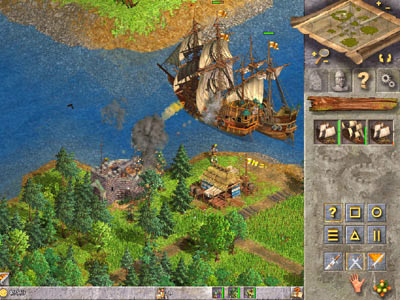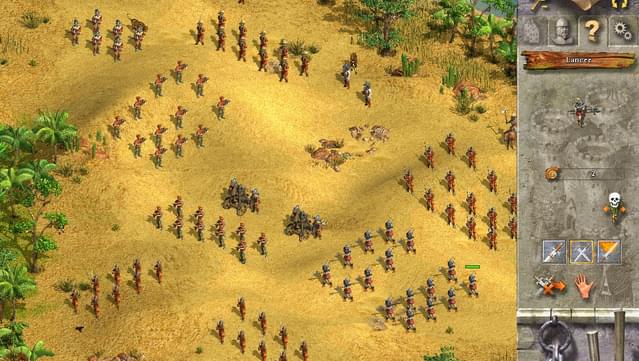

Although Columbus thought that this island was Japan ("Sipangu"), and it is identified as such on the Contarini-Rosselli map, Ruysch chooses not to do so. North of South America appears "Spagnola", the site of Christopher Columbus' landing. South America appears as a large distinct continent, called "Terra Sancte Crucis sive Mondus Novus", with an inscription where Ruysch notes that he knows very little about the new continent. Portuguese fisherman caught vast quantities of cod in the area at the time. The inscription "Baccalauras", meaning codfish, also shows Portuguese influence. He draws most of the northern American coastline from Contarini, using a similar folding conical projection. He uses mainly Portuguese sources, in particular the Contarini-Rosselli map of 1506. Ruysch's membership of the expedition has been debated, as his map does not show much new information. He may have been a member of John Cabot's expedition from Bristol trying to reach China. Beneventanus says in the introduction to the 1508 Rome Ptolemy that Ruysch claimed to have sailed from England to the North Pole and then through to Asia.

It has been suggested that he was friends with Raphael. He became a Benedictine monk c1505 and was given an office in the papal palace by Julius II this is presumably when he made his world map. Johann Ruysch (1460-1533) was an artist and cartographer from the Low Countries, most probably from Utrecht. Indeed, the watermark (Briquet 12163) is normally associated with books published in Venice in 1508, which suggests the present work was assembled towards the end of the lifespan of the 1507 edition. The present work also includes six leaves of the 14 leaf 'Orbis nova descriptio' by Beneventanus, usually found in the 1508 edition only. The present example includes Johannes Ruysch's world map that, although commissioned for the 1507 edition, was not completed in time, and is normally only found in examples of the 1508 edition, where it is mentioned on the title-page. The modern maps were edited by Marcus Beneventanus (1465-1524), a Celestine monk. Translated into Latin by Jacopo D'Angelo, this edition includes seven modern maps not present in the editions of 14. The third Rome Ptolemy, including Johann Ruysch's important and rare fan-shaped world map the earliest obtainable printed depiction of the Americas. Countermark: T within a circle surmounted by a cross (Briquet 9134).

Collation: A-C8, D-E6, F-O8 (O8 blank), a6, 34 maps on 68 leaves, Aa-Bb8, Cc4 Watermark: Swan surmounted by a crown above a key (Briquet 12163). Geog," morocco lettering piece to flat spine, some restoration to outside corners of both covers.

#Anno 1503 le nouveau monde full
200 leaves, one of which is blank, comprising letterpress title, index, and text in double columns with 52 lines to a full column on 107 leaves, followed by one blank leaf, ornamental initials and woodcut diagrams in the text and full page woodcut "Sphaero in plano" on N1 recto, 6 leaves (of 14 of the "orbis nova descriptio" by Beneventanus normally found in the fourth (1508) edition), 34 double-page copper engraved maps on 68 leaves (one folding), and the treatise "De Locis" in 20 leaves, area of restoration to lower right corner of title, iron-gall ink marginalia (mainly confined to corrections on M8 recto and verso, and the addition of modern titles to the suite of 26 Ptolemaic "ancient" maps), relief shown pictorially, major toponyms underlined in manuscript in red ink on all maps (except that of the modern world), small area of early colour to relief in Arabian Peninsula on "Sexta Asiae", "Quinta Europe" and "Sexta Europe" with old paper reinforcement on verso at centrefold, "Quarta Asiae", "Duodecima et Vltima", with small repaired tears to lower left and right margins respectively, six "modern maps" with old paper reinforcement to versos, "Tabula moderna Francie" trimmed into title at upper margin, "Tabula nova Italie" trimmed just into image at left margin, "Tabula moderna Polobiae, Ungarie, Boemie, Germanie, Russie, Lithuanie" trimmed into printed border at right, "Tabula Moderna Hispanie" trimmed into printed border at foot. The earliest obtainable printed depiction of the Americas Folio (403 by 275mm).


 0 kommentar(er)
0 kommentar(er)
